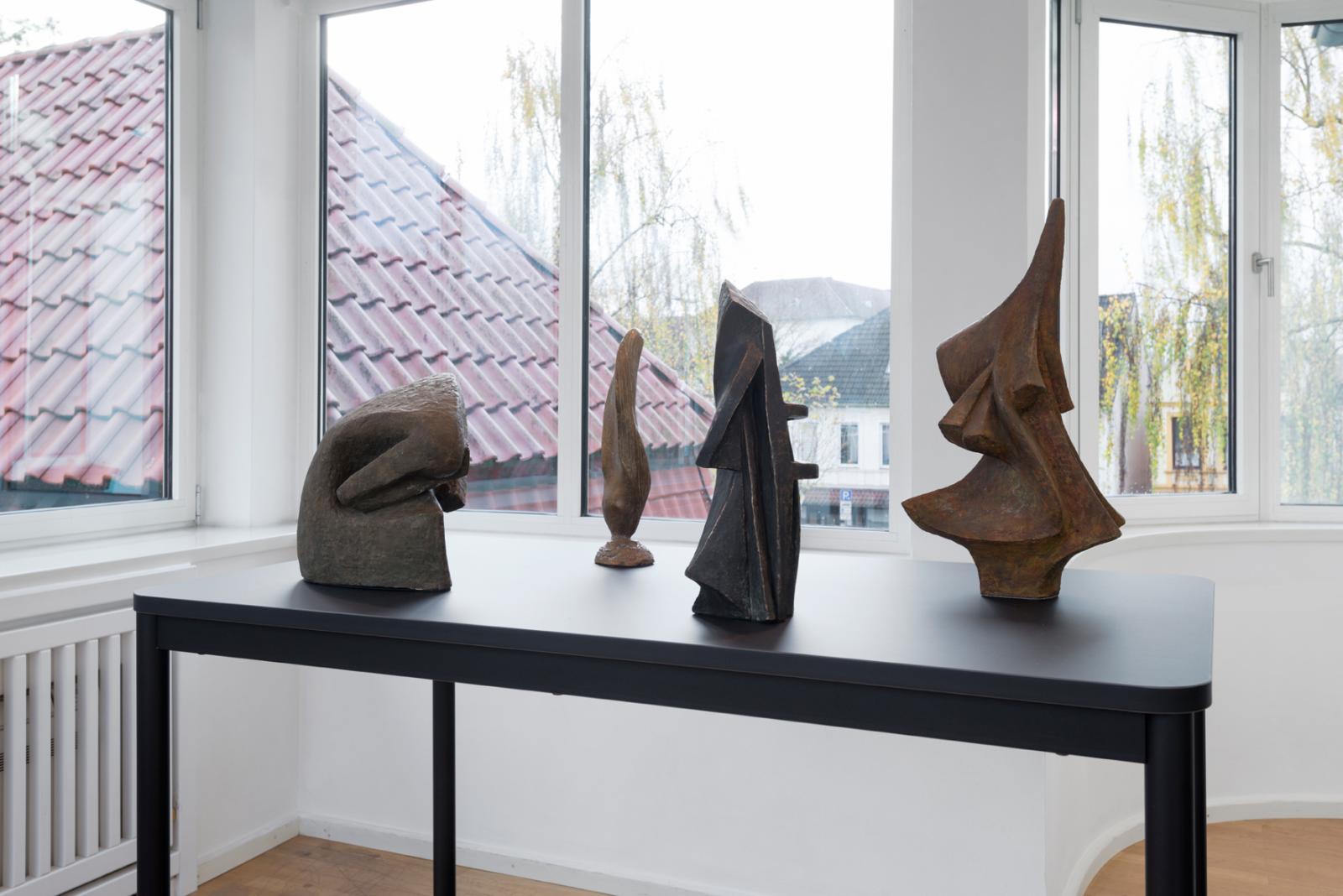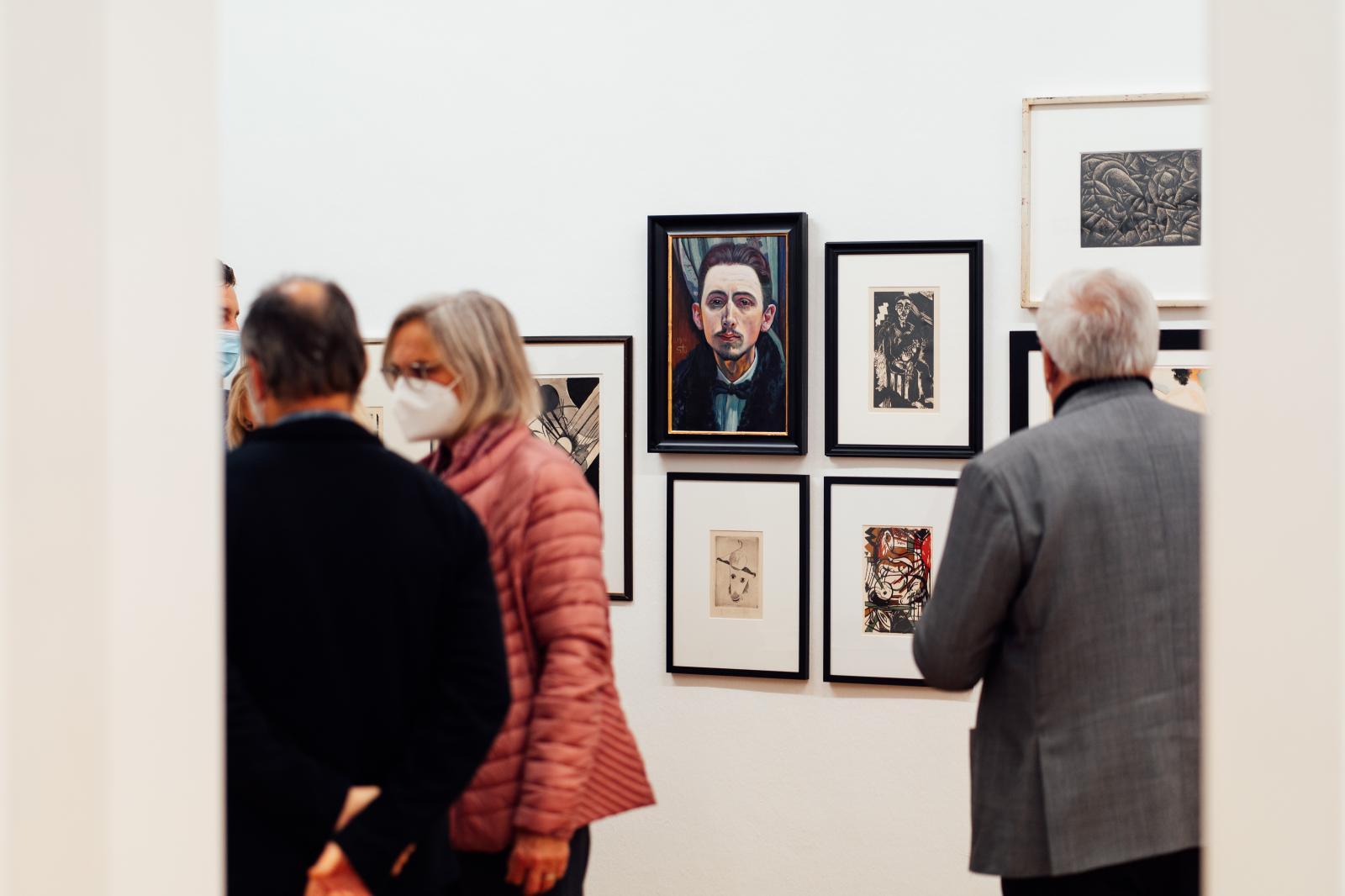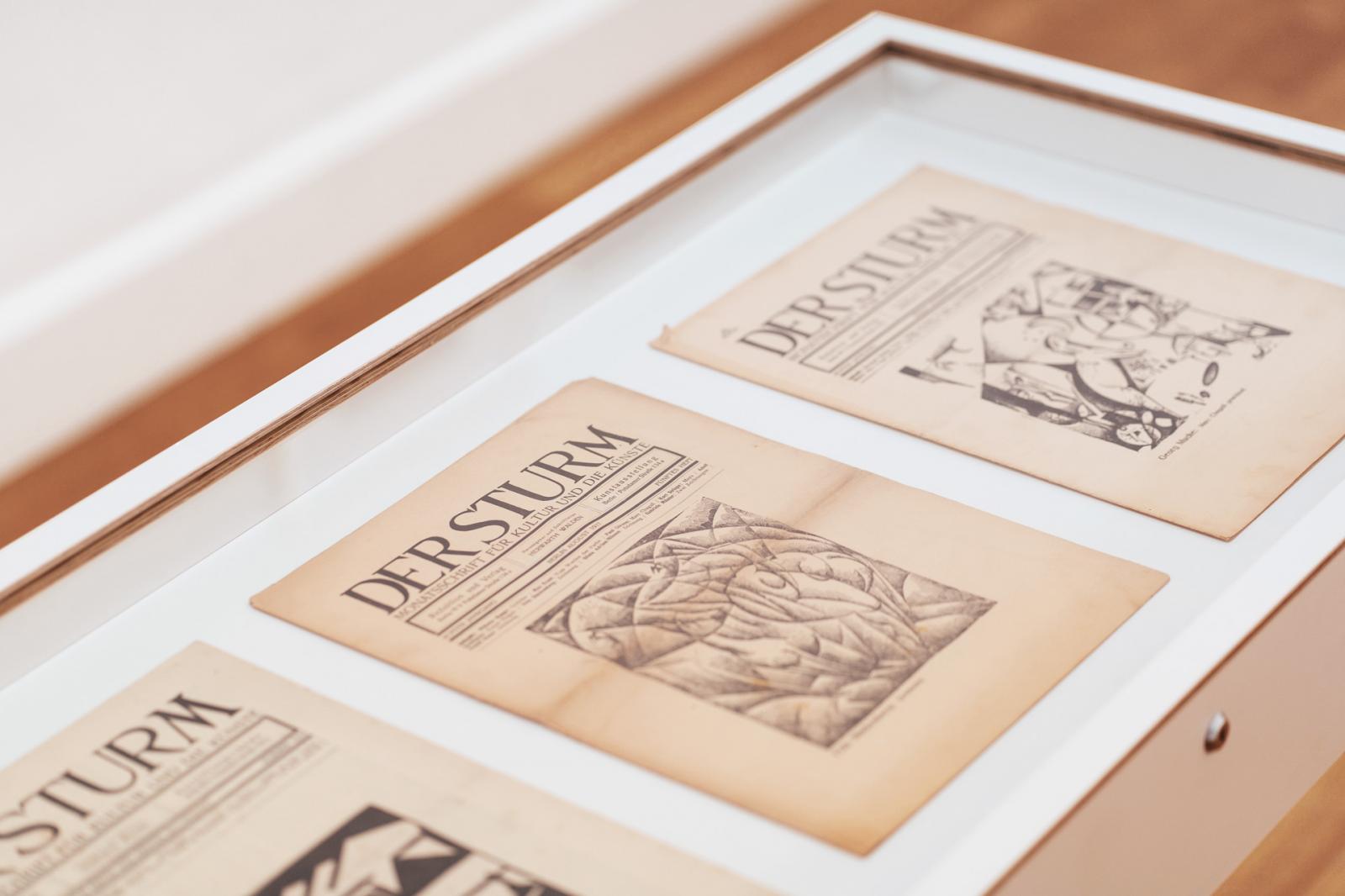Collection
With the opening of the Städtische Galerie at Haus Coburg in 1974, the art collection of the city Delmenhorst found a permanent home. The collection reaches back to the 19th century and includes painting, sculpture, graphics, photography and installation art. It is exhibited in Haus Coburg’s exhibition spaces, but also presented in various other city-owned buildings and public spaces.
The collection focuses primarily on artists from Herwarth Walden’s avant-garde gallery DER STURM at the beginning of the 20th century. Our holdings further include the most extensive collection in Germany of selected artists with ties to the city of Delmenhorst – including Arthur Fitger, Fritz Stuckenberg and Marianne Mangels. Through an active acquisition policy and donations, the collection is constantly being expanded, with contemporary art serving as a second focus.
Collection focus
Arthur Fitger
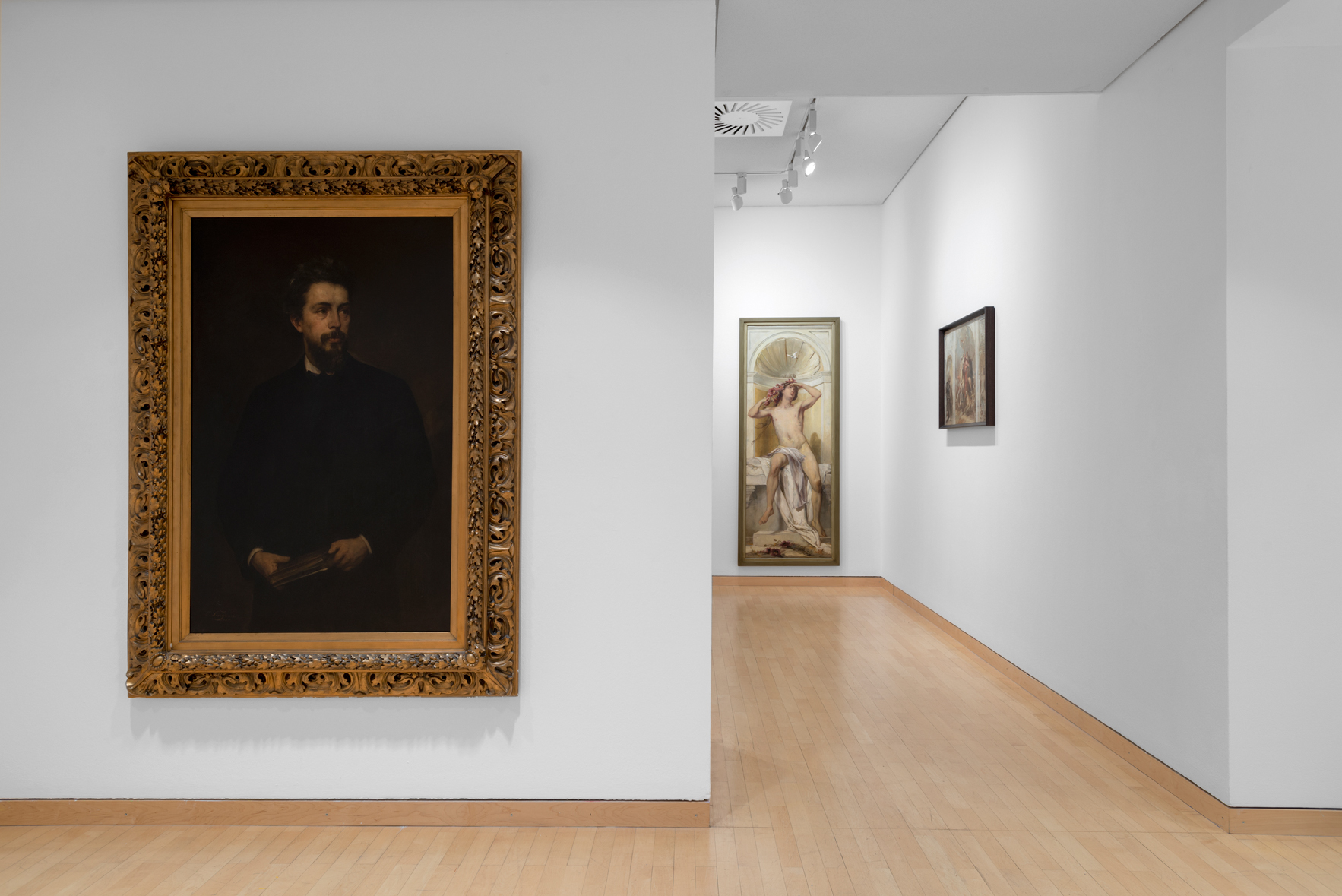
For Hans Stephan, director of the Städtische Galerie until 1989, Arthur Fitger was a central artistic figure. Born in Delmenhorst in 1840, he emerged in the 1870s as an important history painter in Germany. A celebrated decorative painter, he worked in cities such as Berlin and Leipzig, Hamburg and Hanover, Bremen and Oldenburg, as well as in Amsterdam and Antwerp. His monumental paintings were firmly committed to academic idealism. His murals of religious and mythological scenes were highly sought after for decorating the prestigious interiors of public buildings such as the Bremen Stock Exchange and the Oldenburg Palace Hall as well as private residences. Arthur Fitger saw himself as a painter-poet who published poetry and also critiqued the painting, poetry, music, and theatre of his time for the arts and culture section of the newspaper.
His taste in art quickly lost its appeal with the rise of Impressionism and plein air painting around the turn of the century. In often disparaging reviews, he criticised, for example, art from the Worpswede art colony as ‘completely barren potato naturalism’, thus relegating himself to the sidelines. Largely isolated, he died in Horn near Bremen in 1909. Since his works were often commissioned for specific architectures, they are rarely found in public art collections. The Städtische Galerie in Delmenhorst owns the largest collection of Fitger’s works in Germany.
Collection focus
Fritz Stuckenberg
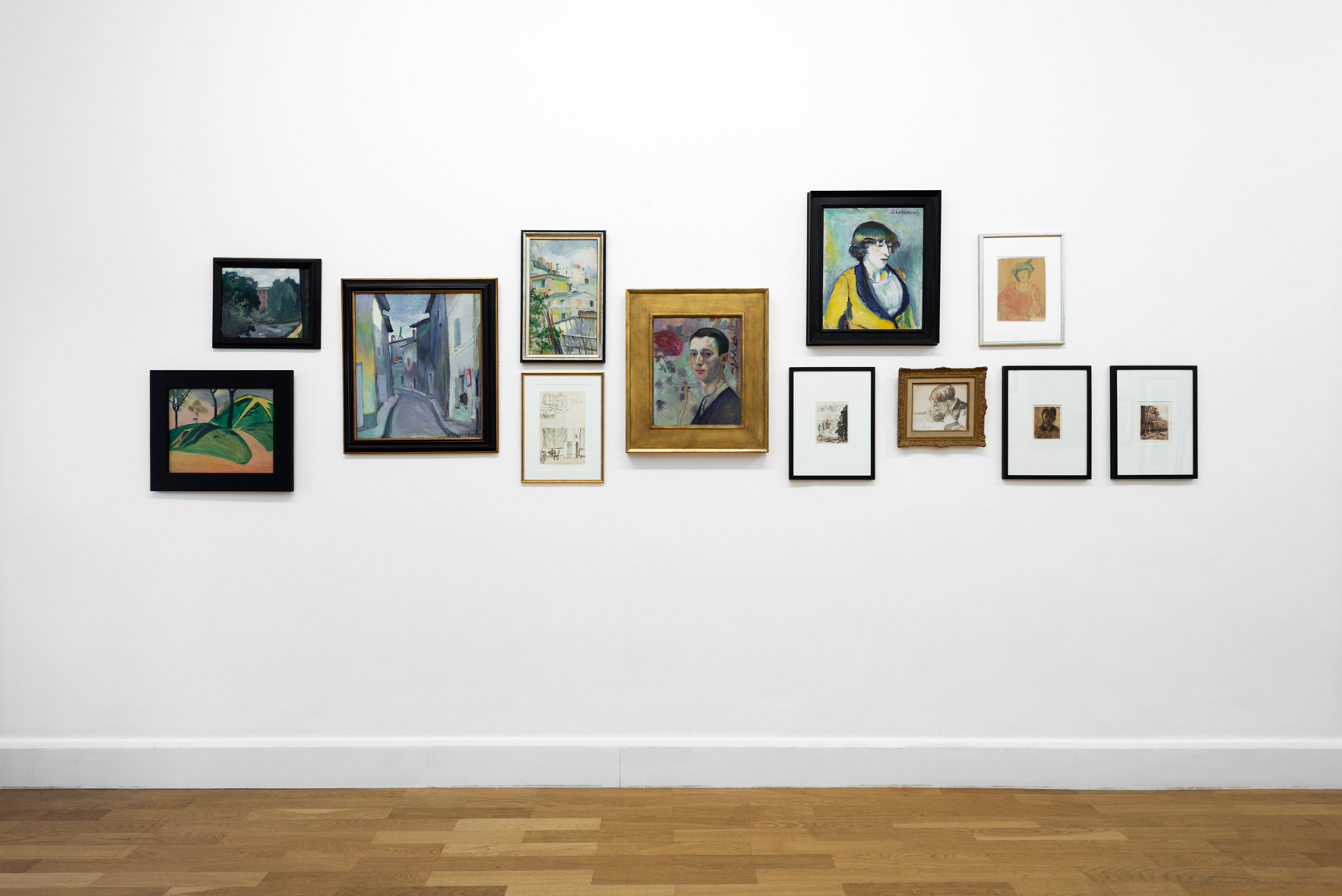
Fritz Stuckenberg’s estate has been on permanent loan to Haus Coburg from the Niedersächsische Sparkassenstiftung since 1998. Thanks to Haus Coburg’s director Barbara Alms, who stewarded the collection from 1989 to 2010, a significant collection of the versatile artist’s work is available for exhibition and research purposes, as well as his private correspondence and library. Barbara Alms expanded the Fritz Stuckenberg holdings with works created in Paris and Berlin, where he lived and worked in the 1910s and 20s, providing important context for modern art movements.
Fritz Stuckenberg (1881 Munich – 1944 Füssen) was well-versed in a variety of artistic styles; he was equally adept at the language of naturalism, Post-Impressionism, and abstraction, he created Cubo-Futuristic prints and paintings of a sexually evocative symbolism and religious spiritualism. Influenced by the places where he lived and the circles he moved in, his painterly style changed. He lived in Paris from 1907 to 1912. There, he frequented the Café du Dôme, a meeting place primarily for German artists. Impressed by Paul Cézanne, Henri Matisse and Robert Delaunay, he turned away from an academic painting style, and increasingly relied on the distinct dynamics of colours , while shifting to a brighter palette.
In subsequent years in Berlin, the avant-garde movement around the magazine DER STURM became Fritz Stuckenberg’s central point of reference. A frequent guest at the home of publisher and gallerist Herwarth Walden, and a friend of Heinrich Campendonk, Georg Muche, Arnold Topp and of the authors Paul van Ostaijen and Salomo Friedlaender, Stuckenberg was represented at international exhibitions.
The Delmenhorst model
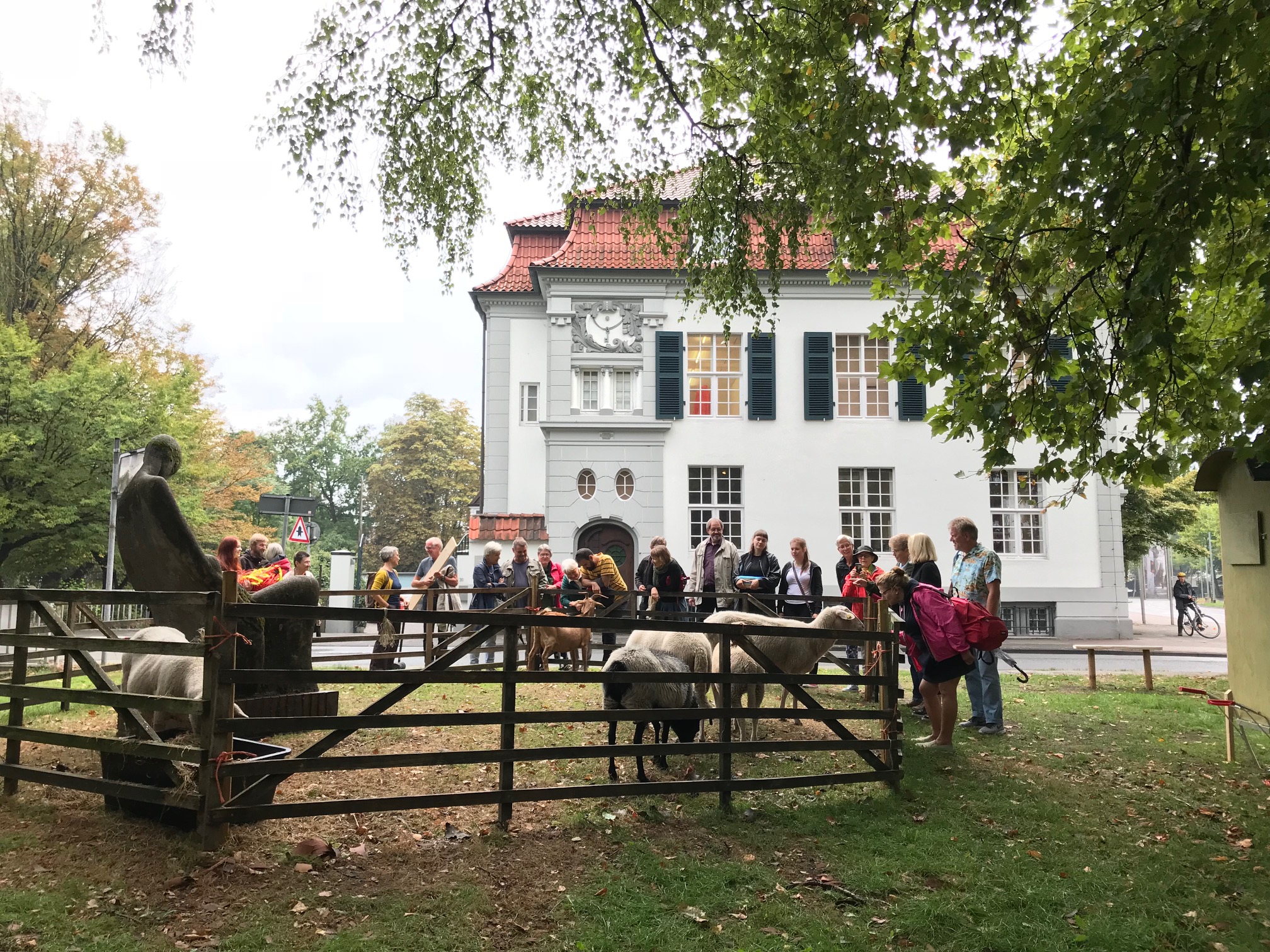
Haus Coburg regularly features exhibitions in which Delmenhorst itself serves as the thematic focus. Under director Annett Reckert, for example, Thomas Putze brought the city’s water tower alive with a sound installation in 2010. In 2014, Kasia Fudakowski calculated the property value of Villa Coburg, and addressed the Coburg family’s predominantly patriarchal mindset. The Delmenhorster Graft, a green oasis near the city centre, served as the stage for a project by Gabriela Oberkofler in 2016. From a mobile studio the artist observed her natural surroundings by collecting, drawing and creating installations. Three years later, Frederik Værslev realised a series of paintings by recreating the windows of Villa Coburg and using them as frames for his floral motifs. And, in 2018, Georg Winter proposed an alternative usage for the Wollepark neighbourhood, using sheep as neighbours and accomplices. These site-specific productions turn buildings such as Haus Coburg or the water tower into artistic subject matter. They make use of the surroundings as an expanded exhibition space and engage audiences in the midst of urban life.
In 2021, Matilda Felix took over as director of the Städtische Galerie Delmenhorst.

